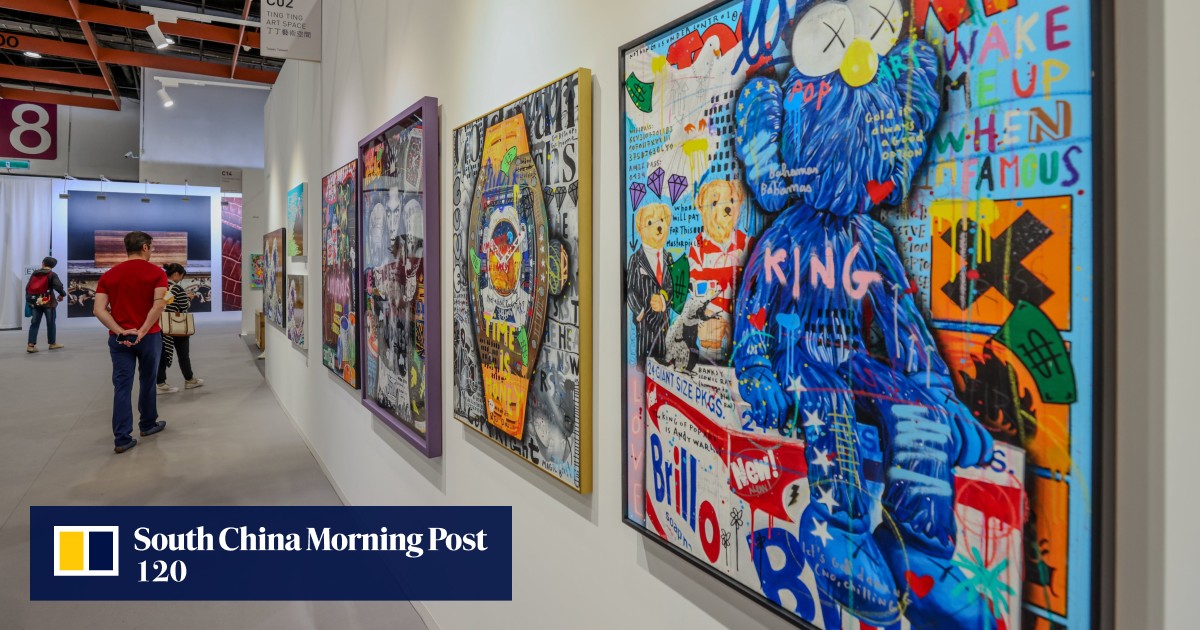“Generally the consensus is we are headed in one direction, with the markets continuing to gain momentum,” said Clare Francis, a senior adviser for the non-profit Provenance Blockchain Foundation.

Feeling their way in digitally
Opportunities are also emerging in a “hybrid category” that lies between traditional financial assets and unconventional ones such as carbon credits “where folks are looking at tokenisation to create greater efficiencies in the market and build secondary markets”, Richardson said.
Most of the projects in Asia are either at the stage of demonstrating a proof of concept or in regulatory sandboxes – business innovation under a regulator’s supervision – but in 12 to 18 months “you will start to see real commercial models around tokenisation”, he added.
Can Singapore’s new crypto plans become a ‘blueprint’ for the banking industry?
Can Singapore’s new crypto plans become a ‘blueprint’ for the banking industry?
“There is definitely strong interest and demand for the tokenisation of wealth assets in this region, with on-chain asset tokenisation in Asia projected to become a US$3 trillion market opportunity according to BCG’s report,” said Henry Zhang, founder and CEO of Singapore-based trading platform DigiFT.
He was referring to the Boston Consulting Group, which says a large chunk of the world’s wealth is locked in illiquid assets that typically trade at a discount because of lack of liquidity.
Shallow markets not only limit investment opportunities but also stifle the growth of new asset classes such as carbon credits. Greater access, industry executives say, can increase awareness about the importance of such assets as the world continues to search for ways to reduce emissions.
“If you are a retail investor today and you think that carbon is going to be a significant asset class to trade … how do you buy a carbon credit? You can’t, it’s very difficult,” Richardson said. “But imagine a world where carbon credit is tokenised.”
Tokenisation of unconventional assets such as wine, art or even real estate involves creating security tokens that represent securities. The issuance of security tokens requires compliance with regulatory rules.
“While there is some regulatory ambiguity over the licensing required to list, trade, and invest in such tokens, the tokens could also be securitised”, by setting up a fund that invests in art or wine, for example, Zhang said.
Earlier this month, UBS Asset Management launched its first live pilot of a tokenised variable capital company fund. This fund is part of a wider project designed to bring various real-world assets onto the blockchain that is known as Project Guardian, a collaborative industry initiative led by the Monetary Authority of Singapore.
Industry executives say these tokenisation trends indicate that the market will pick up far more strongly in future as compared to one-time bond issuances.
Asia’s moment?
Traditional businesses are likewise expanding their reach to encompass tokenisation in a bid to win over key Asian clients.
“We are endeavouring to create a new opportunity in the space from art and intangible things that are copyrighted and in the domain of intellectual property rights. Tokenisation makes sense because you can capture the asset – and in this case intellectual property – to both prove ownership and transfer this transparently between parties,” said Thorsten Neumann, Singapore-based technology lead at SC Ventures.
The firm is expected to announce in the coming weeks a new venture that aims to tokenise financial assets such as equities and bonds, and potentially even airplane financing, he said.
Tokenisation brings with it all the benefits of the blockchain with the attributes of a traditional financial asset, he added. “You have trading, price discovery and liquidity.”
Asia’s digital-asset champions hold out hope for ‘crypto spring’
Asia’s digital-asset champions hold out hope for ‘crypto spring’
While volatility in traditional assets like equities are likely to drive the trend in digitalisation, challenges still abound, analysts say. Consumer awareness about digital tokens is generally low, while markets such as India are still establishing regulatory rules. Concerns about digital platforms’ vulnerability to terrorism, illegal trades and cyberattacks could also hinder the pace of introducing tokenisation in Asian hubs other than Singapore and Hong Kong.
The opportunities presented by the tokenisation of real-world assets in Asia has stoked interest from distant shores. US-based Provenance Blockchain Foundation, which has real-world assets worth US$8.1 billion, is eyeing a slice of the market.
“We’re currently working on a large initiative now in Asia that includes a government agency. The project will be completed and announced in November, and is expected to have significant local and global appeal,” said Francis of Provenance Blockchain Foundation.
The challenge in Asia will be the need to navigate the many and varied domestic markets, “which adds complexity”. More than half of Southeast Asia’s population also remains on the fringes of mainstream finance, she added.
“That said, the big opportunity is in consumerisation to bring finance to those currently locked out in Asia,” Francis said.

